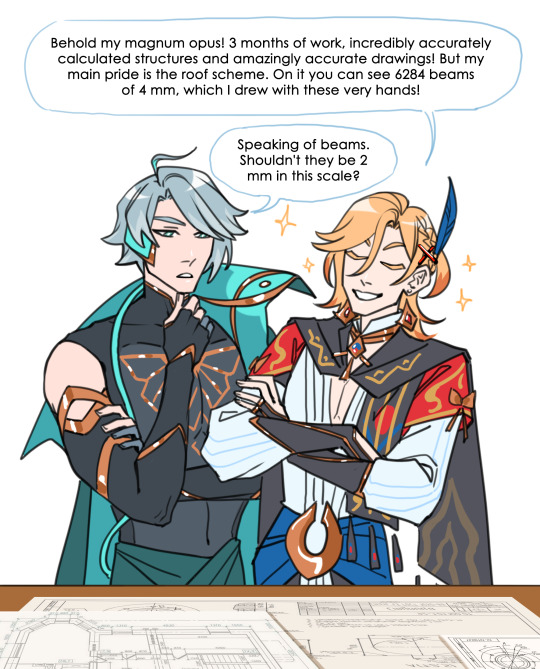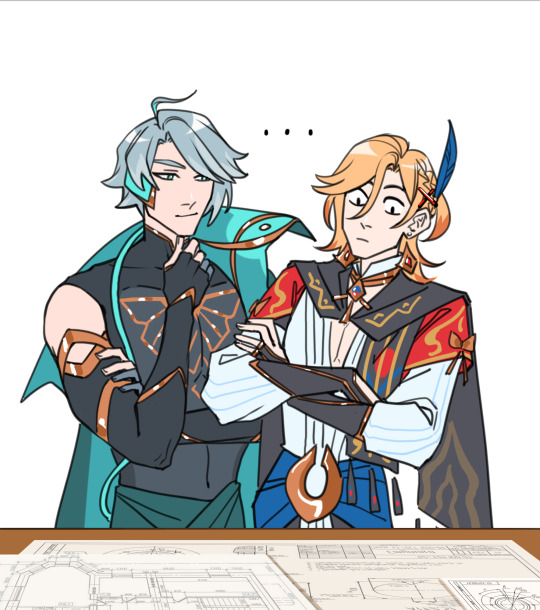#scalingup
Explore tagged Tumblr posts
Text
this is it. them. scaling is so frustrating tho.




5K notes
·
View notes
Text
I Need Better Sh*t Talkers: Why Success Isn’t Just About Hustle—It’s About the Right Circle
I see Grant Cardone out here, standing on stages, flying private, rubbing elbows with A-listers, and getting Kevin Freaking Hart at his Vegas event. And honestly? It annoys me. Not because I hate the guy—hell, I’ve watched him for years, studied his rebuttals, and I know he fought to get where he is. But let’s be real—his talent alone didn’t get him there. The Harsh Reality: It’s Not Just About…
#BreakTheCycle#BusinessNetworking#EntrepreneurshipTruths#HighTicketSales#MillionaireMindset#PlayTheRealGame#SalesMastery#ScalingUp#ThePowerCircle#WealthMindset
0 notes
Text
HDMS012. Buy or Build? What Harvard Taught Me About DTC Acquisitions (And What Walmart’s $235M Loss on Bonobos Can Teach Us About the Risks & Rewards)
So, we’ve made it this far in my deep dive into Harvard’s Digital Marketing Strategy course, and at this point, we’ve covered:
How DTC (Direct-to-Consumer) brands disrupted traditional marketing.
The entire DTC Value Chain—from customer insights to R&D, product design, distribution, and customer experience.
What traditional companies can do to compete, using L’Oréal’s strategy as a case study.
Now, we’re diving into one of the most high-stakes decisions a legacy brand can make when trying to keep up with DTC startups: 👉 Should they acquire a DTC brand or build one in-house?
Big brands LOVE acquisitions. They see a scrappy, fast-growing DTC company and think: "Why compete when we can just buy them?"
Sometimes, this works beautifully. Unilever bought Dollar Shave Club for $1B and gained an instant presence in men’s grooming. Other times… it’s an absolute disaster. Walmart bought Bonobos for $310M and sold it for just $75M—a $235M loss on what was supposed to be their DTC play.
So, today’s post is all about what makes or breaks a DTC acquisition—and why some brands thrive while others flop.
And because I don’t just want to talk about business theory, we’re going to connect this to comedy, content creation, and creative careers.
Should you collaborate with an existing brand/show or build your own?
When does adapting a proven format make more sense than reinventing the wheel?
And what can Walmart’s $235M loss on Bonobos teach us about investing in the wrong opportunities?
Let’s get into it.
II. Why Do Big Companies Acquire DTC Brands?
Big brands aren’t stupid (most of the time). When they acquire a DTC company, they’re not just buying the product—they’re buying the audience, the data, and the brand identity that made that DTC brand successful in the first place.
Here’s why established companies go on a DTC shopping spree instead of building their own brands from scratch:
1. Instant Access to a Built-In Customer Base
Legacy brands usually sell through retailers (Walmart, Target, Sephora), meaning they don’t own their customer relationships. But DTC brands do.
💡 Example:
If L’Oréal acquires Perfect Diary, they suddenly gain access to all of Perfect Diary’s Chinese Gen Z customers—an audience they would struggle to reach on their own.
Instead of spending millions on marketing and customer acquisition, they just buy the brand that already did it.
🎭 How This Relates to Comedy & Creative Careers: Ever notice how big media companies acquire indie podcasts or YouTube shows instead of launching their own?
Spotify bought The Ringer (Bill Simmons’ podcast network) instead of starting from scratch.
Netflix buys existing YouTube creators’ IP rather than launching unknown shows.
Even in stand-up, bigger networks acquire comedy specials rather than taking risks on unknowns.
If you’ve built a loyal audience, you become the asset.
2. Access to DTC Data & Digital Insights
DTC brands are built on first-party data—something legacy brands lack because retailers keep customer data to themselves.
📊 Why Data Matters:
Traditional brands rely on third-party reports, focus groups, and delayed retailer data.
DTC brands track real-time customer behavior (purchases, clicks, reviews).
When a legacy brand buys a DTC company, they gain instant access to customer insights they never had before.
💡 Example:
When Unilever acquired Dollar Shave Club, they didn’t just buy razors—they bought a subscription model and deep insights into men’s grooming habits.
L’Oréal could acquire Perfect Diary not just for the brand, but for the social media-driven marketing data that Perfect Diary uses to outmaneuver competitors.
🎭 How This Relates to Comedy & Creative Careers:
Media companies buy TikTok stars & YouTubers because they come with audience analytics & engagement data.
Comedy festivals book acts with high engagement, not just talent.
Even in stand-up, Netflix won’t book you for a special unless you have ticket sales & social proof.
Your audience data is as valuable as your talent.
3. A Shortcut to Innovation Without R&D Costs
Big brands move slowly. DTC brands move fast.
💡 Why This Matters:
R&D (Research & Development) is expensive and slow—big companies need years to launch a new product.
DTC brands skip the bureaucracy and go straight to testing & selling.
Acquiring a DTC brand means legacy brands don’t have to reinvent the wheel.
📌 Example:
Before Unilever bought Dollar Shave Club, they had no cool, modern razor brand to compete with Gillette.
Instead of spending years creating a new razor company, they just bought the one that already had a loyal audience.
🎭 How This Relates to Comedy & Creative Careers:
Networks buy existing YouTube shows instead of starting original content from scratch.
Stand-up comedians with viral clips get Netflix specials faster than those grinding in clubs.
Production companies adapt hit YouTube series instead of funding experimental new formats.
If you prove your concept works, someone will want to buy in.
4. Expansion Into New Markets
Sometimes, a company just can’t break into a new category—so they buy their way in.
📌 Example:
Unilever didn’t have a strong presence in men’s razors—Gillette dominated.
Instead of launching their own razor brand, Unilever acquired Dollar Shave Club and immediately had a foothold in the market.
🎭 How This Relates to Comedy & Creative Careers:
If a comedy club wants a younger crowd, they book TikTok comedians instead of waiting for older acts to develop younger audiences.
If a production company wants Gen Z viewership, they partner with influencers instead of launching shows from scratch.
If a festival wants international appeal, they buy licensing rights to global acts instead of developing new talent locally.
Sometimes, it’s easier to acquire an audience than to build one from scratch.
III. Why DTC Acquisitions Fail (And What Creators Can Learn from It)
Buying a DTC brand sounds like a shortcut to success, but it doesn’t always work. Some acquisitions become massive wins (like Unilever’s purchase of Dollar Shave Club), but others crash and burn (like Walmart’s $235M loss on Bonobos).
Here’s why big companies fail at managing DTC brands—and what comedians, creators, and entrepreneurs can learn from it.
1. The Profitability Problem: DTC Brands Burn Money
Most DTC brands don’t make money—at least, not in a way that traditional companies expect.
📌 Why This Happens:
DTC brands prioritize growth over profit. They raise millions from investors, spend aggressively on marketing, and focus on scaling fast rather than turning a profit.
When a big company buys them, that changes. Investors want profit, not just growth. Suddenly, the DTC brand has to make money—and many can’t.
💡 Example: Walmart & Bonobos
Walmart acquired Bonobos for $310 million in 2017 as part of a larger DTC shopping spree.
But Bonobos wasn’t profitable—it relied on expensive digital ads and premium branding, which clashed with Walmart’s discount-focused model.
In 2023, Walmart sold Bonobos for just $75 million, losing $235 million in the process.
🎭 What Creators Can Learn:
Some creators focus on going viral but don’t think about long-term sustainability.
If a network or production company picks up your show, they’ll expect it to generate real revenue, not just engagement.
Lesson: If you want long-term success, don’t just grow fast—grow sustainably.
2. Legacy Companies Don’t Understand DTC Audiences
DTC brands thrive because they speak directly to niche communities. When big corporations buy them, they often kill the magic.
📌 Why This Happens:
DTC brands are built on authenticity. Their audiences engage because they feel like they’re part of something special.
Big brands often apply corporate strategies that strip away what made the brand work in the first place.
The result? Customers leave, engagement drops, and the brand loses its identity.
💡 Example: Gillette vs. Dollar Shave Club
Gillette failed to engage younger audiences because it marketed like a traditional corporate brand.
Meanwhile, Dollar Shave Club used humor, social media, and community-driven marketing to build loyalty.
Unilever bought Dollar Shave Club—but they kept its identity intact, allowing it to thrive post-acquisition.
💡 Example: Comedy Specials & Streaming Services
Netflix buys up comedy specials but often forces comedians into a one-size-fits-all format that loses what made their comedy special in the first place.
Some comedians find that their YouTube specials get more engagement than their Netflix ones, because they have full control over branding, marketing, and audience connection.
🎭 What Creators Can Learn:
If you sell a project to a big company, make sure they respect your creative vision.
Don’t let corporate interference kill what makes your brand unique.
3. The Scale Problem: Not Every DTC Brand Can Go Big
Some DTC brands work because they’re niche. Trying to force them to scale too fast can destroy them.
📌 Why This Happens:
DTC brands succeed by focusing on specific audiences. When a big company buys them, they often try to force mass-market expansion too quickly.
But not every brand is meant to scale—and growing too fast can dilute the brand, alienate core customers, and lead to failure.
💡 Example: Glossier’s Expansion Mistake
Glossier dominated the online beauty space by marketing directly to millennial and Gen Z consumers.
But when they tried to scale into mass retail, they struggled to maintain the same level of community engagement.
In 2022, they laid off a third of their workforce and had to rethink their retail strategy.
🎭 What Creators Can Learn:
Not every comedian needs to go mainstream. Some do better with tight-knit fan communities instead of mass appeal.
Some comedians thrive on TikTok, Patreon, or live shows instead of trying to land a Netflix special.
Lesson: Not every project needs to be “scaled.” Sometimes, a loyal niche is more valuable than a big but disengaged audience.
4. Timing the Acquisition: When Should a Big Company Buy a DTC Brand?
One of the biggest risks in DTC acquisitions is when to buy.
📌 Why This Happens:
Buy too early, and you risk acquiring a brand that hasn’t proven itself yet.
Buy too late, and you’ll pay a premium price for a brand that might already be past its peak.
Some companies hold out for too long, waiting to see if a brand will succeed—only to watch a competitor buy it first.
💡 Example: L’Oréal & Perfect Diary
If L’Oréal had bought Perfect Diary early, they could have secured it for a lower price—but also with more risk.
If they waited too long, they’d risk paying a massive premium or losing the opportunity to a competitor.
🎭 What Creators Can Learn:
Timing matters in creative careers.
If a network offers you a deal too early, you might lose creative control before you establish yourself.
If you wait too long to take bigger opportunities, you might miss your peak window.
Lesson: Know when to sell, when to hold, and when to walk away.
The Bottom Line: Not Every Acquisition Works—But Some Do
Buying a DTC brand can be a game-changer—or a massive flop. The difference comes down to strategy, execution, and whether the big company understands what they’re actually buying.
🎭 What Creators & Comedians Should Take Away: ✅ Your audience is your biggest asset. Protect it. ✅ Growth is good, but sustainability matters more. ✅ Not every project needs to scale—sometimes niche is better. ✅ If a big company buys your work, make sure they respect its core identity.
IV. The Best Approach to DTC Acquisitions (And What Creators Can Learn from It)
Not all DTC acquisitions fail—some thrive and become massive success stories. But what separates a smart acquisition from a costly mistake?
For legacy brands, acquiring DTC companies can be a winning strategy—if done right. The same applies to comedians, creators, and entrepreneurs looking to partner with bigger platforms while keeping their brand intact.
Here’s what successful acquisitions have in common—and how to apply these lessons to your own career.
1. Acquisitions Work Best When They Enhance an Existing Strength
The smartest acquisitions aren’t random—they complement what the buying company already does well.
📌 Why This Works:
Instead of just “buying growth,” companies use acquisitions to fill a gap in their expertise.
A DTC brand’s agility + a legacy brand’s resources = the best of both worlds.
💡 Example: Unilever & Dollar Shave Club
Unilever was already a powerhouse in personal care but lacked a strong foothold in men’s shaving.
Acquiring Dollar Shave Club let them compete directly with P&G’s Gillette while also learning DTC marketing strategies.
Why it worked: Dollar Shave Club wasn’t just a standalone brand—it strengthened Unilever’s overall business.
🎭 What Creators Can Learn:
Don’t take any deal just because it’s big. Ask: Does this partnership amplify what I’m already doing?
If a comedy network, sponsor, or brand wants to work with you, make sure their platform aligns with your audience—or it won’t be a good fit.
Lesson: A great deal should enhance what you do best—not force you to change your brand.
2. The Best Deals Protect the Brand’s Identity & Audience
DTC brands thrive because of their identity, audience, and unique voice. If a big company changes too much, it can kill what made the brand work in the first place.
📌 Why This Works:
The best acquisitions preserve the brand’s core identity while giving it more resources to grow.
The acquiring company learns from the DTC brand’s strategy instead of forcing a corporate overhaul.
💡 Example: Amazon & Zappos
Amazon bought Zappos in 2009 but let it run independently.
Instead of absorbing it, they let Zappos keep its customer-first culture and continue doing what made it great.
Why it worked: Amazon provided funding and infrastructure, but Zappos retained its brand DNA.
🎭 What Creators Can Learn:
If a big network or brand wants to buy your content, negotiate for creative control.
Many comedians regret selling rights to their specials without keeping ownership.
Lesson: Don’t let a partnership erase what makes your brand special.
3. Smart Acquirers Integrate DTC Strengths Instead of Diluting Them
Big companies buy DTC brands for a reason—but they often fail by forcing traditional strategies instead of learning from the brand they bought.
📌 Why This Works:
Instead of forcing DTC brands to fit into old business models, smart companies adopt DTC strengths into their existing brands.
This allows them to modernize without losing credibility.
💡 Example: L’Oréal & Youth to the People
L’Oréal acquired Youth to the People (a clean beauty brand with a cult following).
Instead of overhauling the brand, L’Oréal kept its indie aesthetic, sustainability mission, and brand voice.
They learned from its DTC strategies and applied them to other brands in their portfolio.
🎭 What Creators Can Learn:
If a platform buys your show, podcast, or special, make sure they see the value in your unique style.
Netflix specials are hit-or-miss because some comedians lose the raw energy of their work when forced into a corporate structure.
Lesson: A good partnership lets you keep your magic—it doesn’t box you in.
4. The Timing Has to Be Right
Even the best acquisition strategy can fail if the timing is off.
📌 Why This Works:
Buy too early, and the brand might not be proven yet.
Buy too late, and the cost is too high to justify.
The best acquisitions happen when a DTC brand has strong traction but still needs resources to scale.
💡 Example: P&G & Native Deodorant
P&G acquired Native (a natural deodorant brand) at the right time—when it had proven demand but needed scale.
They helped Native expand into retail stores, while keeping its indie DTC marketing approach.
Why it worked: The timing was right—Native was already successful, but still had room to grow.
🎭 What Creators Can Learn:
If a network, brand, or sponsor wants to work with you too early, they might change your vision too much.
But if you wait too long, you might miss opportunities to scale your reach.
Lesson: Know when to hold out and when to take the deal.
The Bottom Line: The Best DTC Acquisitions Are a Win-Win
The best acquisitions work because both sides benefit. The legacy company gains modern marketing insights while the DTC brand gains resources to grow.
🎭 What Creators & Comedians Should Take Away: ✅ The right partnership amplifies what you already do best. ✅ Keep creative control when selling your work. ✅ If a deal forces you to change too much, it’s not the right one. ✅ Smart growth beats fast growth—time your moves carefully.
V. Final Thoughts & Lessons from DTC Acquisitions
The DTC acquisition boom taught us a lot about what works and what doesn’t in business—and those lessons apply to comedians, creators, and entrepreneurs just as much as they do to billion-dollar corporations.
So, after analyzing the wins, failures, and cautionary tales, what are the key takeaways?
1. Not Every Acquisition Is a Good One—Know When to Say No
📌 Why This Matters:
Just because someone offers to buy your brand, content, or idea doesn’t mean it’s the right move.
Many legacy brands bought DTC companies without a clear plan—and ended up losing money.
The same happens to comedians who sign bad deals or creators who give away their rights too soon.
💡 Case Study: Walmart & Bonobos
Walmart bought Bonobos for $310M, thinking it would help them modernize their image.
But Bonobos’ core customers didn’t align with Walmart’s audience—and Walmart eventually sold it for just $75M (a $235M loss).
Lesson: A bad match can cost you more than just money—it can hurt your brand.
🎭 For Comedians & Creators:
If a network, agency, or brand deal doesn’t align with your goals, turn it down.
Many comedians regret selling their specials outright instead of licensing them.
Lesson: Not every opportunity is a good one—choose deals that strengthen your brand.
2. The Best Acquisitions Keep the Brand’s DNA Intact
📌 Why This Matters:
DTC brands succeed because they have a strong identity and audience.
When big companies force them into a corporate mold, they lose what made them special.
This happens to artists, writers, and comedians too—when they get a big break but are told to change too much.
💡 Case Study: Amazon & Zappos
When Amazon acquired Zappos, they let it keep its unique company culture.
Instead of absorbing it, Amazon let Zappos keep its customer-first approach and thrive.
Lesson: The best partnerships preserve what makes a brand (or creator) unique.
🎭 For Comedians & Creators:
Don’t let a big opportunity erase what makes you, YOU.
If a platform wants to change your entire style, brand, or creative vision, it’s a red flag.
Lesson: The best deals amplify your voice, not silence it.
3. Timing Is Everything—Know When to Sell & When to Hold
📌 Why This Matters:
Selling too early means losing control and potential profits.
Waiting too long could mean missing your window to scale.
The smartest acquisitions happen when a brand is successful, but still has room to grow.
💡 Case Study: P&G & Native Deodorant
P&G bought Native when it was already a proven success but still had room to scale.
Instead of forcing Native to change, P&G gave it retail distribution power while keeping its indie appeal.
Lesson: The timing was perfect—Native was strong, but still needed a push to grow.
🎭 For Comedians & Creators:
Example: Kevin Hart built his own fanbase before working with major studios.
Example: Many comedians turn down Netflix specials early on so they can build leverage for a better deal later.
Lesson: Know when to hold out and when to take the deal.
4. A Strong Business Model Beats Hype Every Time
📌 Why This Matters:
Many DTC brands raised millions, spent it on ads, and never became profitable.
Hype doesn’t mean long-term success.
Creators fall into the same trap—a viral moment doesn’t equal a sustainable career.
💡 Case Study: Casper (The Mattress Brand)
Started as a DTC disruptor with huge early success.
Spent millions on digital ads but never built a truly profitable business model.
Eventually struggled with growth and profitability, showing that hype isn’t enough.
🎭 For Comedians & Creators:
Many viral creators struggle to turn fame into a long-term career.
Some comedians go viral once but fail to monetize their audience long-term.
Lesson: Build a strong foundation, not just a viral moment.
5. The Best Deals Are Win-Wins for Both Sides
📌 Why This Matters:
The best acquisitions help both the buyer and the seller.
If a DTC brand gets acquired but loses its audience, it’s a bad deal.
If a legacy company buys a brand but doesn’t learn from it, it’s a bad deal.
💡 Case Study: Unilever & Dollar Shave Club
Unilever wanted a foothold in men’s grooming, so they bought Dollar Shave Club.
Instead of changing it, they learned from DSC’s DTC model and applied it to their other brands.
Lesson: The best acquisitions help BOTH companies grow.
🎭 For Comedians & Creators:
The best network or brand deals help both sides.
If a company just wants to “use” your audience without benefiting you, it’s not a good deal.
Lesson: A great partnership is a two-way street.
Final Takeaways: How DTC Acquisitions Relate to Your Own Growth
✅ Not every deal is a good one—choose opportunities that align with your goals. ✅ Protect your creative identity—don’t let a big platform erase what makes you unique. ✅ Timing matters—know when to hold out and when to make a move. ✅ Hype is temporary, but a strong foundation lasts—focus on long-term success. ✅ The best partnerships benefit both sides—make sure you’re getting as much as you’re giving.
VI. How I’m Making This Work with AuDHD
Navigating business strategy, content creation, and career growth with AuDHD means working with my brain, not against it. Learning about DTC acquisitions has actually given me a surprising framework for how I approach my own work as a comedian and creator.
1. Pattern Recognition & Decision Fatigue: Learning When to Say No
My brain wants to say yes to every opportunity because it sees potential in everything.
But not every deal, gig, or project is a good match—and learning from DTC acquisitions has helped me see patterns of what works and what doesn’t.
How I apply this: I’ve started analyzing every opportunity with clear criteria instead of acting on impulse. (Would this gig/brand deal help my long-term goals, or is it just a distraction?)
2. Interest-Based Focus: Scaling Without Burnout
AuDHD means hyperfixations drive my best work, but scaling those projects can be tricky.
Many DTC brands scaled too fast without a sustainable business model—which mirrors how creators often take on too much at once.
How I apply this: I’m learning to build systems so that my comedy, live shows, and content aren’t just bursts of energy, but a long-term, structured career.
3. Dopamine-Driven Learning: Making Business Strategy Fun
I thrive on new information—which is why I’m obsessed with this Harvard course.
But if something doesn’t engage me, I procrastinate—so I need engagement hacks.
How I apply this:
I turn my learning process into storytelling (which makes business strategy feel fun).
I gamify my tasks—treating marketing, branding, and content planning like an RPG leveling system.
4. The “Right Environment” Rule: Protecting My Creative Energy
DTC brands lose their identity when acquired by the wrong company—and the same happens to creators when they say yes to deals that don’t align.
My AuDHD brain struggles in restrictive environments, which means I have to carefully curate who I work with.
How I apply this:
I prioritize working with people who get my vision.
I don’t force myself into "industry norms" that don’t suit my workflow.
Final Thought on AuDHD & Business Strategy
There’s a huge overlap between DTC strategy and creative independence. The same way DTC brands fought to disrupt traditional business models, I’m disrupting traditional career paths as a comedian, producer, and content creator.
Understanding what makes a brand (or a person) valuable, scalable, and sustainable has changed the way I approach my own work. And if you’re AuDHD too, these lessons might help you design a career that works for your brain—not just for the industry.
DTC brands changed marketing, but many struggled with scaling—leading legacy companies like Unilever, P&G, and Walmart to acquire them instead of competing. However, as Walmart’s $235M loss on Bonobos shows, buying a DTC brand doesn’t always pay off.
For comedians, content creators, and independent artists, this raises an important question: Should you build your own career from scratch, or partner with a bigger platform? The same challenges apply: ✅ Build your brand independently = More control, but harder to scale. ✅ Join an existing platform or network = Faster growth, but potential loss of creative freedom.
As someone with AuDHD, I’ve had to rethink how I balance independence with collaboration. The key is knowing when to scale, when to partner, and when to walk away.
For comedians, that means understanding the trade-offs of signing with agencies, collaborating with networks, or staying fully independent. For creators, it means recognizing when brand deals, sponsorships, or production partnerships make sense—and when they don’t.
The bottom line? Whether in business or creative work, success isn’t just about growing fast—it’s about growing right.
📌 Read More in This Harvard Digital Marketing Series:
1️⃣ Marketing in the Digital Era: What Harvard’s Business Course Taught Me About Selling Comedy 2️⃣ Outsourcing vs. DIY: What Harvard’s Digital Marketing Course Taught Me About Scaling Creativity 3️⃣ Comedy, Clicks & Customer Acquisition: Harvard’s Digital Marketing Breakdown 4️⃣ From Clicks to Comedy Clubs: What Harvard’s Digital Marketing Course Taught Me About Selling an Experience 5️⃣ Buy or Build? What Harvard Taught Me About DTC Acquisitions (And What Walmart’s $235M Loss on Bonobos Can Teach Us About the Risks & Rewards) ← (You’re here!)
🛠 Apply This to Your Own Career:
💡 Are you better off building your own brand or collaborating with a bigger platform? 🎭 If you’re a comedian, should you self-produce shows or work with established clubs & networks? 🎥 If you’re a content creator, how do you balance creative freedom with brand partnerships?
Comment below with your thoughts—let’s talk about scaling creative careers without selling out.
#DigitalMarketing#MarketingStrategy#HarvardBusiness#DTC#BusinessLessons#ComedyMarketing#ContentCreators#ScalingUp#BrandBuilding#EntrepreneurMindset#IndieCreators#CreativeBusiness#SocialMediaMarketing#Ecommerce#ComedyCareer#GrowthStrategy#CreatorEconomy#StandUpComedy#BusinessOfComedy#MarketingTips#HarvardInsights
0 notes
Text
Digital Marketing Services
Boost your business to new heights with our expert solutions! 🚀 Let’s grow together. 🌱

#BusinessGrowth#GrowWithUs#EntrepreneurSuccess#ScalingUp#MarketingStrategy#SuccessMindset#BoostYourBusiness#SmallBusinessSupport#BusinessSolutions#WeHelpYouGrow
0 notes
Text

Tackle challenges with Sambhav Consultants, solving them one puzzle piece at a time.
#BusinessGrowth#SuccessMindset#InnovateAndGrow#Entrepreneurship#GrowYourBusiness#BusinessSolutions#StartupLife#BusinessSuccess#Leadership#HustleAndGrow#InnovativeThinking#EntrepreneurGoals#BusinessStrategy#SuccessJourney#BuildYourBrand#ScalingUp#DigitalTransformation#GrowthMindset#CreativeSolutions#BusinessDevelopment#AchieveMore
0 notes
Text
Proven Strategies to Expand Your Business Online: A Comprehensive Guide for Growth 🚀
Whether you're a small business owner or an entrepreneur looking to scale, growing your online presence is critical in today's digital world. In this guide, we break down the most effective strategies for online business expansion, including:
✅ Leveraging SEO to drive organic traffic ✅ Building a strong social media presence ✅ Utilizing email marketing for engagement and retention ✅ Exploring partnerships and affiliate marketing ✅ Enhancing user experience for better conversion rates
Each section provides actionable tips to help you boost visibility, attract more customers, and generate higher revenue. Ready to take your business to the next level?
1 note
·
View note
Text
🌟 Scaling your business is more than just growth—it's about sustainable, efficient expansion. 🚀 Whether you're stepping into new markets or upgrading systems, scalability ensures you're ready to meet future demands with confidence.
Let’s unlock new opportunities and take your business to the next level! 💼
#Scalability#BusinessGrowth#DigitalTransformation#FutureReady#EfficientScaling#GrowthStrategy#TechSolutions#BusinessInnovation#NextLevelGrowth#SustainableGrowth#TechForBusiness#BusinessPlanning#ExpandYourBusiness#TechAdvancement#FutureFocused#DigitalScaling#SmartSolutions#BusinessEfficiency#ScalableSolutions#GrowthMindset#InnovationAtWork#BusinessSuccess#EntrepreneurshipGoals#ScalingUp#ModernBusiness#FluxITSolutions
1 note
·
View note
Text
How to Expand and Grow Your Business in Dubai, UAE?
Discover effective strategies to expand and grow your business in Dubai, UAE. This guide covers market insights, legal considerations, funding opportunities, and tips to scale your company in one of the world’s most dynamic business hubs. Unlock your potential in the thriving UAE market.
#BusinessGrowth#DubaiBusiness#UAEEntrepreneurship#ExpandYourBusiness#BusinessInDubai#UAEStartup#MarketExpansion#BusinessOpportunities#DubaiSuccess#ScalingUp
0 notes
Text
ClickFunnels Two Comma Club: How to Hit 7-Figure Sales
"The ClickFunnels Two Comma Club is an elite group of entrepreneurs who have generated over $1 million in sales using ClickFunnels. This guide explores proven strategies and tactics to help you build high-converting sales funnels, attract the right audience, and scale your business to 7-figure success. Learn how to leverage ClickFunnels tools and techniques to join the ranks of top earners."
Let me know if you need any adjustments!

#TwoCommaClub#ClickFunnelsSuccess#MillionDollarSales#EntrepreneurLife#FunnelHacker#OnlineBusiness#SalesFunnel#DigitalMarketing#ScalingUp#SevenFigureBusiness#MarketingStrategy#BusinessGrowth#LeadGeneration#ClickFunnelsTips#EcommerceSuccess
0 notes
Text
youtube
#deepakshukla#Linkedin#linkedinmarketing#linkedinstrategy#leadgeneration#outreach#splittesting#marketingstrategy#ppc#coldemailing#digitalmarketing#businessgrowth#scalingup#EngagementOptimization#Youtube
0 notes
Text
Multi-Language Website Implementation: Expanding Global Reach and Boosting International Sales

In today’s digital age, businesses aiming for global success must break through language barriers to effectively reach international audiences. Implementing a multi-language website is a powerful strategy that not only enhances user experience but also significantly boosts global engagement and sales. In this article, we’ll explore a real-world case where MoizWordPress successfully implemented a multi-language website for a client, resulting in remarkable business growth across international markets.
The Challenge: Reaching a Global Audience
Our client, a rapidly growing e-commerce business, faced a common yet critical challenge: their website was only available in English. Despite having a high-quality product line, they were struggling to tap into non-English speaking markets. Potential customers from various regions were landing on their site but leaving without making a purchase due to the language barrier.
Recognizing the need to cater to a global audience, the client approached MoizWordPress for a solution that would allow them to communicate effectively with international customers, thereby increasing their global market share.
The Solution: Multi-Language Website Implementation
MoizWordPress took on the challenge, developing a comprehensive plan to transform the client’s single-language website into a fully functional multi-language platform. The key steps in this process included:
Language Selection: We conducted thorough market research to identify the most relevant languages based on the client’s target markets. The initial implementation included Spanish, French, German, and Chinese, covering a significant portion of the global audience.
Content Translation: Accurate and culturally sensitive translation is crucial for maintaining brand voice across different languages. We collaborated with professional translators to ensure that product descriptions, marketing content, and other key elements were precisely translated.
Localization: Beyond translation, localization involved adapting content to meet the cultural and regional preferences of the target audiences. This included currency conversions, date formats, and even adjusting imagery to resonate with different cultural contexts.
Technical Integration: Implementing a multi-language website requires robust technical support. MoizWordPress utilized WordPress’s multi-language plugins and custom coding to seamlessly integrate the different language options. The website was designed to automatically detect a user’s language preference based on their browser settings, providing a tailored experience.
SEO Optimization: To ensure the multi-language content was discoverable, we implemented an SEO strategy tailored to each language. This included optimizing keywords, meta descriptions, and URLs for each version of the website, resulting in higher rankings in search engines across different regions.
The Results: Expanded Reach and Increased Sales
The implementation of a multi-language website had a profound impact on the client’s business. Here’s a breakdown of the results:
Global Reach: Within just a few months, the website’s traffic from non-English speaking countries increased by 150%. The new language options made the website accessible to a broader audience, significantly expanding the client’s global reach.
International Sales Growth: The most tangible outcome was the boost in international sales. By enabling customers to shop in their native language, the client saw a 40% increase in sales from international markets, with notable growth in Europe and Asia.
Improved User Engagement: User engagement metrics, including time spent on the site and pages per session, improved across all new language versions. Customers were more likely to explore the site and make informed purchasing decisions when they could navigate in their preferred language.
Brand Loyalty: Offering a multi-language website also enhanced brand loyalty. Customers appreciated the effort to cater to their language needs, resulting in repeat purchases and positive word-of-mouth in new markets.
Conclusion: The Power of Language in Global Business
This case study highlights the undeniable importance of language in reaching a global audience. By implementing a multi-language website, the client not only overcame language barriers but also unlocked new growth opportunities in international markets.
MoizWordPress is proud to have played a pivotal role in this transformation, demonstrating the power of tailored digital solutions in driving business success. If your business is looking to expand its global presence, implementing a multi-language website might just be the key to unlocking your full potential.
Ready to go global? Contact MoizWordPress today to explore how we can help you reach new heights with a multi-language website tailored to your business needs.
#BusinessGrowth#ScaleYourBusiness#GlobalExpansion#GrowthStrategy#MarketExpansion#DigitalGrowth#SmallBusinessGrowth#BusinessSuccess#EntrepreneurGrowth#BusinessDevelopment#RevenueGrowth#ScalingUp#GlobalBusiness#BusinessInnovation#StrategicGrowth
0 notes
Text

Numbers drive success. As businesses grow, manual invoicing becomes impractical. Computers are essential for managing orders and scaling efficiently.
Know More : https://bautomate.com/the-future-of-invoice-processing-automation-trends-in-2024/
#bautomate#BusinessGrowth#InvoiceManagement#Automation#ScalingUp#Efficiency#DigitalTransformation#BusinessMetrics#OrderManagement#AutomationTrends#trends2024
0 notes
Text
"Scaling your business isn't just about reaching more customers – it's about maximizing every opportunity to increase sales and expand your impact. 📈💼 Dive into our proven strategies for driving revenue growth and achieving scalability like never before! 💥

#salesboost#scaleup#businessgrowth#revenuegrowth#salesstrategy#scalability#growyourbusiness#salestips#businessexpansion#maximizesales#revenueincrease#salessuccess#businessdevelopment#profitgrowth#salesandmarketing#scalingup#businesssuccess#saleshacks#entrepreneurship#successmindset#businessstrategy#salesacceleration#revenuegeneration#businessscaling#entrepreneurlife#salesgoals#strategicgrowth#scalingstrategy#businessperformance#growthhacking
0 notes
Text

The people you choose define the future of your business. Choose wisely.🤝
#MotivationForSuccess#BusinessMotivation#SuccessStories#BusinessDevelopment#CorporateWorld#EntrepreneurMindset#MarketTrends#BusinessStrategy#ScalingUp#InnovateAndInspire#BusinessTransformation#LeadershipJourney#SuccessTips#NetworkingMatters#StrongConnections#BusinessRelationships#PartnershipsMatter#NetworkingGoals#TrustAndSuccess#WinTogether#CollaborateAndGrow#BuildYourNetwork#BusinessGoals#Entrepreneurship#SuccessMindset#BusinessGrowth#Leadership#SmallBusiness#StartUpLife#TeamWork
0 notes
Text
Mastering Startup Success: Apptware’s 60 Day-MVP Revolution!
https://www.linkedin.com/pulse/mastering-startup-success-apptwares-60-day-mvp-revolution-apptware-hmzvf%3FtrackingId=kzlqvUXlqPUZxiwU52KHJQ%253D%253D/?trackingId=kzlqvUXlqPUZxiwU52KHJQ%3D%3D

#StartupSuccess#MVPRevolution#MVP#Entrepreneurship#Innovation#BusinessGrowth#ProductDevelopment#TechStartup#BusinessStrategy#StartupJourney#LeanStartup#MVPDevelopment#ScalingUp#Apptware
0 notes
Text








Are you ready to take your business to new heights? Discover the untapped potential of growth marketing strategies and unlock unprecedented growth for your business.
✅ Start with a captivating hook. ✅ Define growth marketing. ✅ Highlight key growth marketing tactics. ✅ Showcase success stories. ✅ Discuss the importance of analytics. ✅ Explore the power of social media. ✅ Encourage audience participation. ➤ https://blog.sociallyin.com/best-times-to-post-on-tiktok
#GrowthMarketing#BusinessGrowth#DigitalMarketing#DataDriven#Innovation#MarketingStrategy#ScalingUp#CustomerAcquisition#ROI#UnleashYourPotential
0 notes